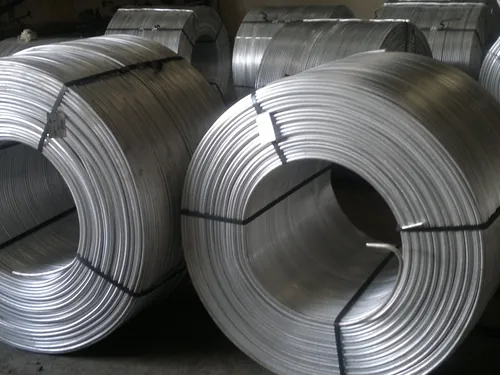Introduction
When we hear the word “spring”, we often think of the season between winter and summer. However, in the manufacturing industry, springs are a type of highly functional mechanical component that can be found in almost every machine and device that we use on a daily basis. Spring and Wire Product Manufacturing is an industry that specializes in producing various types of springs and wire products for use in different applications.
Definition of Spring and Wire Product Manufacturing
Spring and Wire Product Manufacturing refers to the production of various types of springs, such as compression, torsion, extension springs, as well as other wire products like wire forms. These products are designed to provide mechanical support or store energy which can be released when needed. The process involves taking raw materials like steel, stainless steel or copper wires through various stages of manufacturing to produce a finished product that meets specific design requirements.
Brief History of the Industry
The history of spring manufacturing dates back to ancient civilizations where natural materials like animal tendons were used to create tension devices for hunting weapons. In the 15th century, Leonardo da Vinci conducted experiments with helical (coil) springs made from horsehair. The modern spring industry began in the 17th century with advancements in metallurgy that allowed for the creation of more durable materials like steel.
Importance of Spring and Wire Product Manufacturing
The importance of this industry cannot be overstated as springs have become an essential component in everyday life from simple things like clocks to complex machines such as airplanes. For example, without compression springs automobile suspensions would not function properly leading to poor ride quality and safety issues on roads. Additionally, these components must meet strict safety standards which require high levels of precision during manufacturing processes.
Overall Spring And Wire Product Manufacturing is a fascinating industry with a rich history and many practical applications. As we dive deeper into the manufacturing process and types of products in this industry, it will become clear how important these components are to our daily lives.
Overview of the Industry
Types of Springs and Wire Products Manufactured
Spring and wire products manufacturing is an industry that produces a variety of springs and wire forms in different shapes and sizes for various applications. The most common types of springs manufactured are compression springs, torsion springs, and extension springs.
Compression springs are the most commonly used ones as they store energy when compressed. Torsion Springs, on the other hand, are designed to resist a twisting force or torque while extension springs extend or expand under load.
Apart from these three commonly used types of springs, manufacturers also produce wire forms, which include clips, hooks, pins, rings among others. Wire forms are mostly used for attaching or fastening components together.
Materials Used in Manufacturing
Manufacturers use different materials to produce high-quality products that can meet customers’ requirements. Some of the commonly used materials in spring and wire product manufacturing include steel (carbon steel), stainless steel (304 series), copper alloys (beryllium copper), titanium alloys (Beta-C titanium alloy). Steel is the most widely used material because it’s strong and durable with a good balance between strength and cost-effectiveness.
Stainless steel is preferred for its corrosion-resistant properties making it ideal for use in marine environments where saltwater corrosion can be problematic. Copper alloys such as beryllium copper have high electrical conductivity combined with good thermal conductivity making them suitable for use in electrical connectors where heat dissipation is required.
Titanium alloys such as Beta-C titanium alloy possess high strength-to-weight ratios making them suitable for use where weight reduction is critical while maintaining good fatigue resistance. ; manufacturers must carefully select materials that meet customers’ specifications while ensuring that they remain cost-effective to stay competitive in this industry.
Production Process
Wire Forming Process:
One of the critical processes in spring and wire product manufacturing is the wire forming process. The process involves several steps, including wire drawing, straightening and cutting, bending, coiling, and grinding. In the wire drawing process, metal wires are pulled through a die to reduce their diameter and improve their strength.
In straightening and cutting, the wires are straightened to remove any kinks or twists and cut to the desired length. The bending process is used to shape the wires into various forms or shapes.
Coiling entails winding the wire around a mandrel or arbor with constant tension to avoid buckling or twisting during coiling. The grinding process is done to provide a smooth surface finish on the wire before proceeding to spring manufacturing.
Spring Manufacturing Process:
Hot wound springs are manufactured by heating metal wires above their elastic limit temperature and then coiling them on a mandrel or arbor with constant tension. There are several steps involved in hot wound springs manufacturing: coil preparation, heating, coiling, and heat treatment.
Coil preparation involves setting up equipment for production by selecting appropriate tooling such as mandrels of different diameters based on required spring dimensions’ tolerances. Heating the metal wire above its elastic limit temperature results in permanent deformation that allows it to hold its shape after cooling.
During coiling, it’s critical to apply constant tension during winding to avoid buckling or twisting during shaping stages due to compression stresses forming in specific areas due to lack of precise guidance from taunt as-yet-unwound sections of coils that move around during winding. The final step is heat treatment; this process uses high temperatures up until just below melting point (typically 450°C) for few hours under controlled conditions according material type being used aimed at removing residual stresses caused by cold working processes such as wire drawing and bending, improving ductility, hardness, and strength.
Conclusion
The production process in spring and wire product manufacturing is a complex but necessary undertaking. Wire forming processes such as wire drawing ensure that the materials used are strong enough to withstand tension, while heat treatment ensures that springs have adequate strength and durability. The coiling process is also crucial as it determines the final shape of the spring.
By understanding each step in the production process, manufacturers can produce high-quality springs and wire products that meet their customers’ needs. Spring and wire product manufacturing continues to be an important industry that contributes significantly to many industries’ success worldwide.



